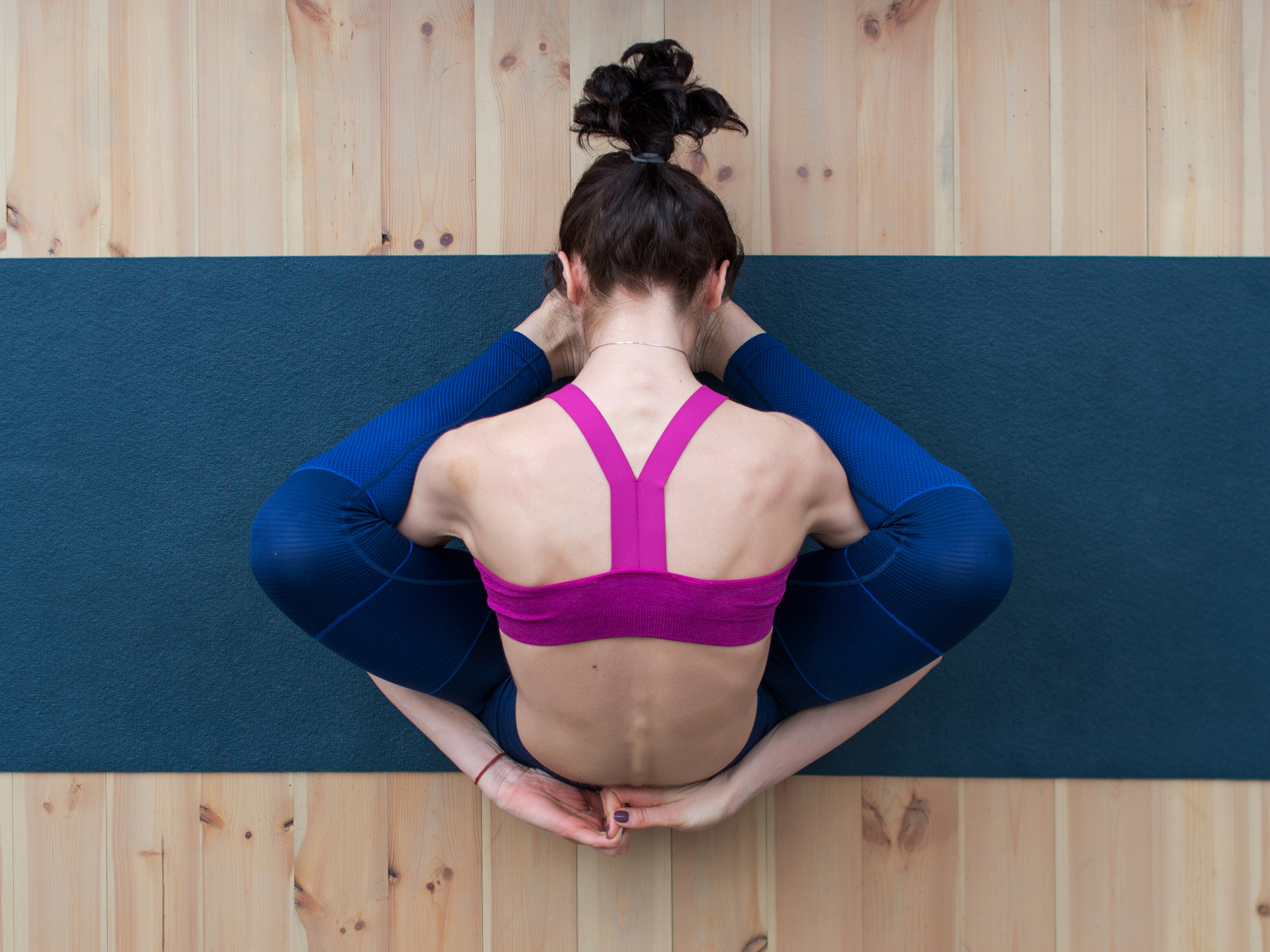Get Easy Health Digest™ in your inbox and don’t miss a thing when you subscribe today. Plus, get the free bonus report, Mother Nature’s Tips, Tricks and Remedies for Cholesterol, Blood Pressure & Blood Sugar as my way of saying welcome to the community!
Tortoise Pose: A stress-busting, sleep-promoting stretch

Yoga has many poses, or asanas, as they are collectively known.
One of the more advanced ones is known as Kurmasana, or tortoise (turtle) pose. This posture offers a great stretch for the spine, upper back, shoulders, legs and groin.
It’s also reported to be a great stress buster and memory helper because it increases blood flow to the brain. Some even suggest doing it before bedtime to help you sleep better.
Tortoise pose has some variation, from easier to more difficult, and in today’s video, Wendy Krauss Talis shows some variations. Just remember to go easy and not to force your body into anything. With practice it should get easier, and the benefits are definitely worth it.
But before you get started with tortoise pose, it’s a good idea to warm your body up first, especially if you haven’t done recent stretches. Chair pose is a great warm up. Try it for a few minutes, then move on to tortoise pose.
Benefits of tortoise pose
According to Yoga traditions, the tortoise pose is known as kurmasana. It is a more advanced pose as it is a bit difficult and have even more variations than shown here. Tortoise pose is very good for improving spinal health by elongating the spine. It is also a great stretch for the shoulders and upper back and legs.
When you assume this pose, because of the position of your body, your internal organs are massaged and there is improvement in digestion and respiration.
Begin with a groin stretch
Because Tortoise requires quite a bit of bending, it is a good idea to start with a simple groin stretch. Sit on the floor, feet together. Grasp both feet with both hands, inhale and open the chest.
As you exhale you will drop your arms on the outside of your legs and lean forward.
Hold for as long as you like to allow the hips to relax and the groin to loosen.
Assuming tortoise pose
Sit up with feet flat on the floor, knees bent. Your heels should be just outside the width of your body.
Thread your arms under your legs so the palms touch the floor on the other side of the feet. Your elbows are under your knees.
Slowly work your heels out a bit, extend the arms, round your shoulders, and lean forward. This is the starting position.
If you are more advanced in your yoga practice, you can continue to separate the feet and arms to go even lower. You can also turn your elbows over for a deeper shoulder stretch.
Coming out of the pose
You want to hold the pose as you as it feels comfortable to do so.
When you are ready to come out of it, you want to walk or shuffle your feet together slowly. When they are close enough to safely and easily unthread your arms, you may do so.
Use your arms to push your upper body erect again.
Wendy also shows a nice variation here, and suggests you hold the pose for 4 or 5 breath cycles. Repeat as often as you like.












